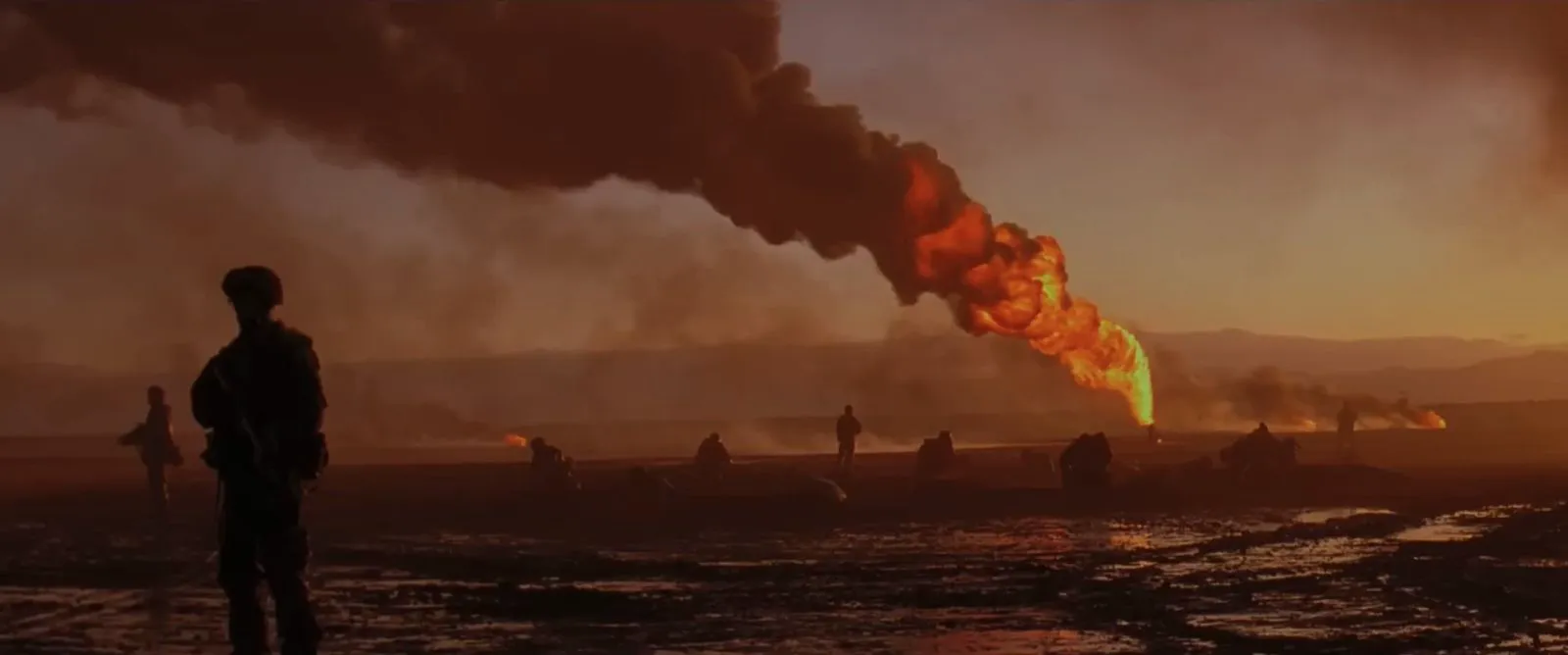In 2073, the world lies in ruins. A global catastrophe in 2036 decimated the planet’s population, ushering in a new era of authoritarian rule. Dictators from across the globe and tech billionaires joined forces, leveraging artificial intelligence to enslave the survivors. Some people seek refuge from the authorities underground. A woman (Samantha Morton), dwelling in the basement of an abandoned supermarket, occasionally ventures to the surface for supplies, contemplating the factors that led to this devastating tragedy.

Samantha Morton in a scene from “2073”
Asif Kapadia’s Dystopian Vision: “2073”
Asif Kapadia, renowned for his acclaimed documentaries “Amy,” “Senna,” and “Diego Maradona,” ventures into a bleak future with “2073.” While he has directed fictional films like “Ali and Nino” and “The Warrior,” “2073” marks his most ambitious and unsettling project to date. The film premiered at the Venice Film Festival and was showcased at film festivals in New York, London, and São Paulo.
Kapadia draws inspiration from Chris Marker’s seminal work, “La Jetée,” a haunting and visually striking film about post-apocalyptic life in Paris after World War III.

A scene from “2073”
Echoes of the Past, Fears for the Future
While “La Jetée” (1962) relies on a sequence of still photographs, Kapadia utilizes archival footage from the late 20th and early 21st centuries. He paints a stark picture of humanity hurtling towards disaster, attributing blame to dictators, billionaires, and a complacent populace oblivious to environmental degradation and the unchecked advancement of artificial intelligence. Kapadia draws parallels between figures like Elon Musk and Xi Jinping, Mark Zuckerberg and Rodrigo Duterte, juxtaposing these figures with harrowing scenes of violence and oppression from around the world.
Nobel laureate Maria Ressa, a prominent figure in the film, asserts that contemporary reality mirrors science fiction.

A scene from “2073”
A Warning, or a Descent into Panic?
In contrast to “Black Mirror,” which explores the potential pitfalls of technological progress, Kapadia seemingly throws all of humanity’s current problems into a single pot, succumbing to a sense of panic. He posits that a coalition of power-hungry elites and avaricious billionaire visionaries, coupled with environmental catastrophe and all-powerful AI, will destroy the world as we know it. While the problems facing modern society extend beyond those highlighted by Kapadia, he seems particularly concerned with the decline of democratic nations, global warming, and the concentration of wealth in the hands of the few.
Style Over Substance?
Kapadia’s approach to the material lacks subtlety, delivering information in a relentless stream without nuanced editing. The film’s message becomes clear within minutes, yet Kapadia reiterates the same points for another hour, resulting in a didactic and ultimately tiresome experience. The post-apocalyptic setting feels like a mere device to shock the audience and inspire some vague call to action. Kapadia offers no concrete solutions, simply urging viewers to “do something.”
Kapadia could have easily condensed his message into a short film. Instead, he briefly immerses viewers in a world reminiscent of “The Last of Us” or the cyberpunk landscape of “Blade Runner 2049.” The result is a hybrid film with unsettling imagery, but Kapadia only skims the surface of complex issues, prioritizing fear over genuine analysis. In criticizing populist politicians, Kapadia ironically employs their very own rhetoric. “2073” is a timely and relevant statement, but ultimately a film of questionable quality.